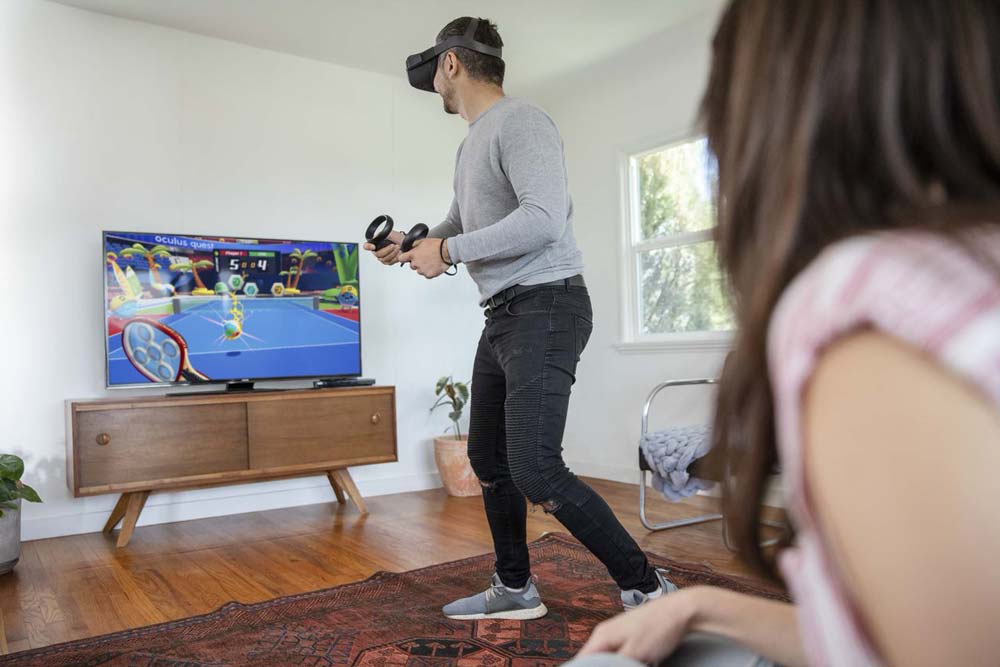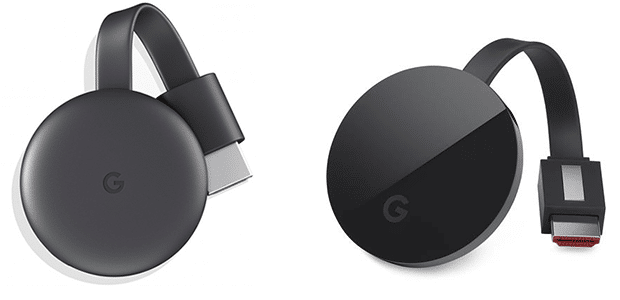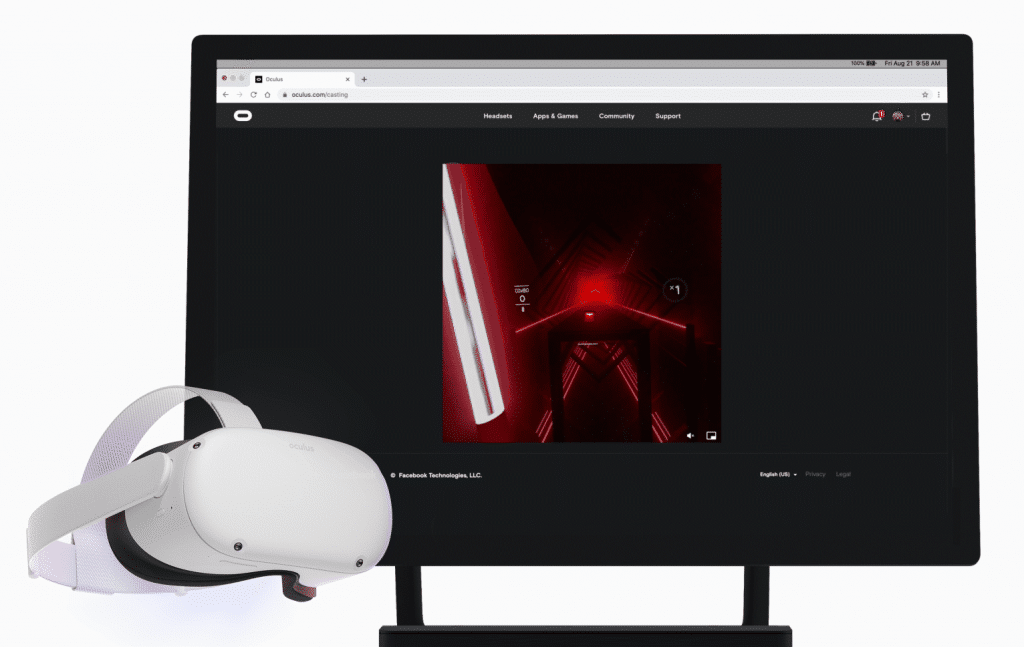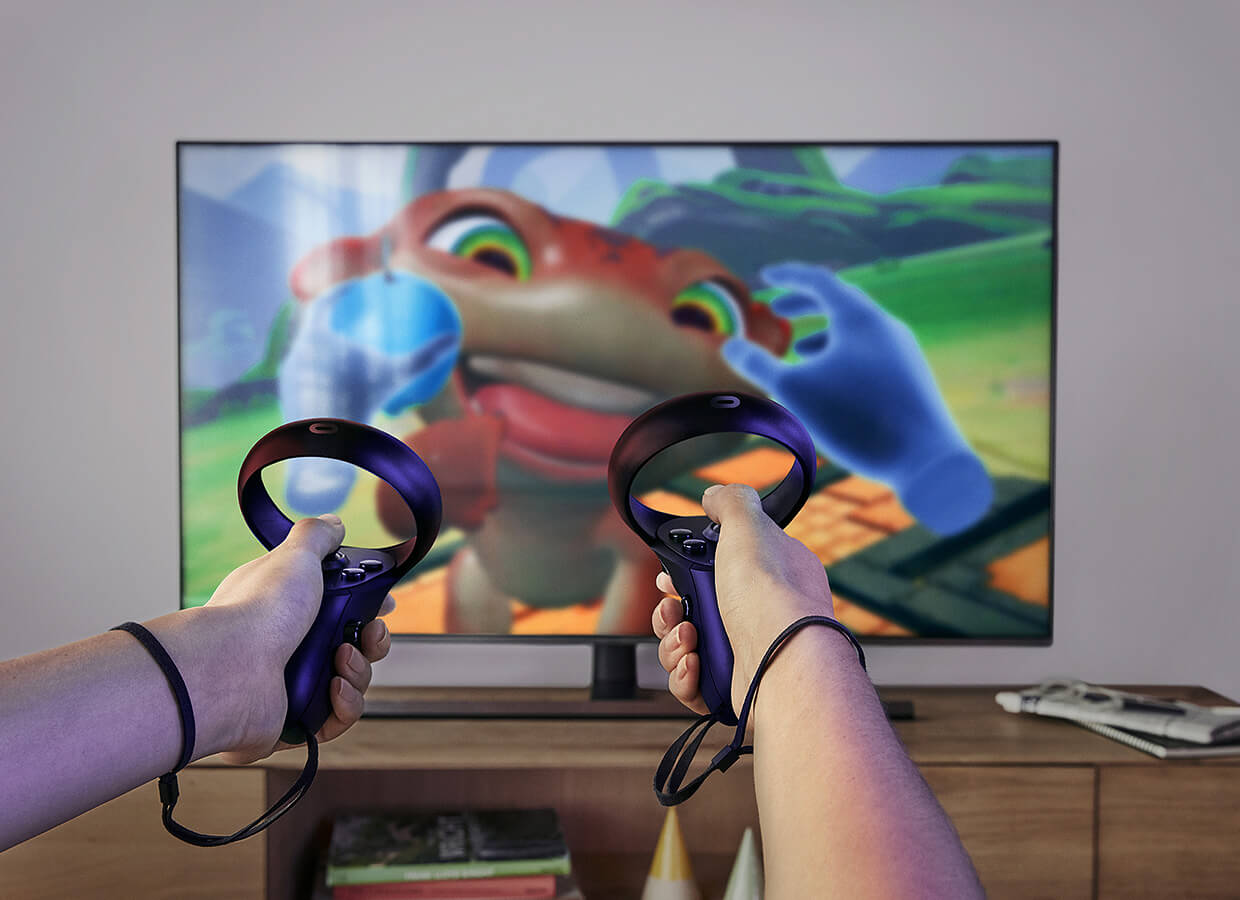
Oculus Quest (2) offers the ability to stream VR content to TVs, smartphones, tablets, and computers. This way, you can let your friends and family members view your virtual reality experience.
There are officially three ways to stream VR content to devices: on smartphones and tablets, on devices that support Chromecast, as well as on PCs and macOS devices using an Internet browser.
Streaming to your smartphone or tablet
This streaming option can be run from within Oculus Quest or from within the Oculus app.
How to start streaming from Oculus Quest to your smartphone and tablet:
- Make sure your smartphone or tablet is connected to the same Wi-Fi network as your Oculus Quest.
- Open the Oculus app on your smartphone or tablet.
- Press the Oculus button on the right controller.
- Select “Share” (arrow symbol) from the VR main menu, and then select the “Stream” option.
- Select “Oculus App” and confirm by clicking “Next”.
- Confirm in the Oculus app that you want to start streaming by selecting “Start Streaming”.
- The red dot in VR indicates that there is streaming.
How to stop the broadcast:
- Press the Oculus button on the right controller.
- Select “Share” (arrow) in the main VR menu.
- Select “Transfer” and “End Transfer”.
Streaming to Chromecast devices

Google Chromecast is an accessory that connects to your TV via HDMI to stream content to your TV via Wi-Fi. Many modern TVs have built-in Chromecast technology. Otherwise, you can buy the accessories separately.
This streaming option can be run from within Oculus Quest or from within the Oculus app.
How to start streaming from Oculus Quest to TV:
- Make sure that your Chromecast device or Chromecast-enabled TV is connected to the same Wi-Fi network as the Oculus Quest.
- Press the Oculus button on the right controller.
- Select “Share” (arrow symbol) from the VR main menu, and then select the “Stream” option.
- Your Chromecast device or Chromecast-enabled TV should appear for selection. Select the appropriate option and the streaming should start.
- The red dot in VR indicates that there is streaming.
How to stop the broadcast:
- Press the Oculus button on the right controller.
- Select “Share” (arrow) in the main VR menu.
- Select “Transfer” and “End Transfer”.
If you want to cancel streaming in the Oculus app, select Stop Streaming in the app.
Streaming in the browser

This type of streaming uses Google Chrome or Microsoft Edge. Other browsers are not currently supported. Since Google Chrome runs on macOS, you can also stream on an iMac or Macbook.
How to start streaming from Oculus Quest to the browser:
- Make sure that the target device (Windows PC, macOS device) is connected to the same wireless LAN as your Oculus Quest.
- On the target device, open the website oculus.com/casting use Google Chrome or Microsoft Edge and log in to your Oculus or Facebook account if you haven’t already.
- Press the Oculus button on the right controller.
- Select “Share” (arrow symbol) from the VR main menu, and then select the “Stream” option.
- Select “Computer” and confirm by clicking “Next” and “Done”.
- The red dot in VR indicates that there is streaming.
- If you want, activate full-screen mode and audio output and adjust the volume.
How to stop the broadcast:
- Press the Oculus button on the right controller.
- Select “Share” (arrow) in the main VR menu.
- Select “Transfer” and “End Transfer”.
Note: If the red signal dot is interfering with you while streaming, you can easily disable it. To do this, go to “Device” in the settings. At the very bottom, you can disable the “video recording display”.
Advantages and disadvantages of streaming

Chromecast devices are currently the best option for streaming: If you stream VR content to a TV, you’ll have a large image and usually a relatively good latency of less than a second. This is enough for most VR apps, with the exception of dynamic music games like Beat Saber and Pistol Whip.
A possible downside to this streaming option is that you need to retrofit your Chromecast if your TV doesn’t support this technology by default. The latest Chromecast model with Google TV costs about $ 70.
It also gives you access to Netflix and other streaming services on your TV and access to related programs using the included remote control. Requires an HDMI input on the TV.
If you don’t have a Chromecast — compatible TV and don’t want to invest in buying one, streaming video to your smartphone or tablet is the easiest solution. The biggest drawback of this type of streaming is the small display, usually higher latency, and greater exposure to interference than Chromecast devices.
Browser-based streaming is the second alternative to Chromecast. It offers reasonably low latency and good image quality, but can’t (yet) display the VR view in widescreen format.








